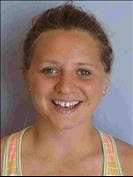Celebration of Scholars
Bartholomew: One of the Few: A Cluster P Mycobacteriophage
 Name:
Aidan Crosby
Name:
Aidan Crosby
Major: Biology
Hometown: Pleasant Prairie, WI
Faculty Sponsor: Deborah Tobiason
Other Sponsors:
Type of research: Course project
Funding: Howard Hughes Medical Institute
 Name:
Megan Fallert
Name:
Megan Fallert
Major: Biology
Hometown: Maplewood, MN
Faculty Sponsor: Deborah Tobiason
Other Sponsors:
Type of research: Course project
Funding: Howard Hughes Medical Institute
 Name:
Tristan Grams
Name:
Tristan Grams
Major: Biology
Hometown: Cudahy, WI
Faculty Sponsor: Deborah Tobiason
Other Sponsors:
Type of research: Course project
Funding: Howard Hughes Medical Institute
 Name:
Luci Krenzke
Name:
Luci Krenzke
Major: Neuroscience
Hometown: Racine, WI
Faculty Sponsor: Deborah Tobiason
Other Sponsors:
Type of research: Course project
Funding: Howard Hughes Medical Institute
 Name:
Allie Steffen
Name:
Allie Steffen
Major: Biology
Hometown: Rosenville, MN
Faculty Sponsor: Deborah Tobiason
Other Sponsors:
Type of research: Course project
Funding: Howard Hughes Medical Institute
 Name:
Meredyth Wenta
Name:
Meredyth Wenta
Major: Biology
Hometown: Kenosha, WI
Faculty Sponsor: Deborah Tobiason
Other Sponsors:
Type of research: Course project
Funding: Howard Hughes Medical Institute
 Name:
Chas Young
Name:
Chas Young
Major: Biology/Neuroscience
Hometown: Geneseo, IL
Faculty Sponsor: Deborah Tobiason
Other Sponsors:
Type of research: Course project
Funding: Howard Hughes Medical Institute
Abstract
Bacteriophages are viruses that specifically infect bacterial hosts. Mycobacterium smegmatis, a close relative of M. tuberculosis, was used as a host to isolate mycobacteriophage from the environment. Phages utilize host machinery to replicate their DNA and proliferate, taking one of two lifestyles. A lytic bacteriophage injects its DNA into the bacterial cell, immediately begins to replicate, and lyses the cells. Temperate phages inject their DNA, which becomes incorporated into the bacterial genome, forming a lysogen. Streaks and titer assays were used to purify single populations of mycobacteriophages from soil samples. Six mycobacteriophages were isolated and characterized using electron microscopy and restriction digestion.
Mycobacteriophage Bartholomew was chosen to have its genome sequenced based upon its DNA quality and intensity. It is a temperate, siphoviridae, cluster P phage with genome length of 46,484 base pairs and defined physical ends. Bioinformatic tools such as Phamerator and DNA Master were used to identify genes and their potential functions. Impending research will reveal whether lysogens of Bartholomew are immune to infection by other phages. Further annotation of Bartholomew’s genome could help identify novel genes and contribute to the growing understanding of evolutionary relationships between phages. Potential avenues of research can lead to advances in phage therapy for treatment of antibiotic-resistant bacteria.
Submit date: March 13, 2015, 12:48 p.m.
